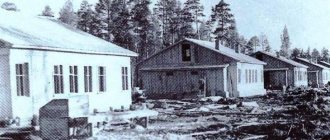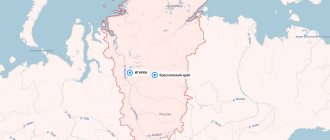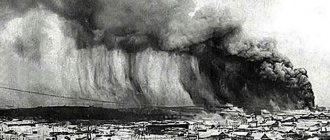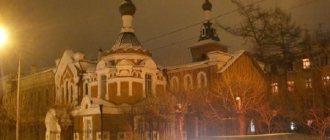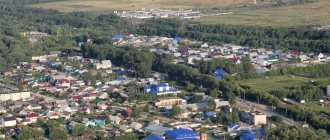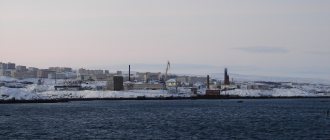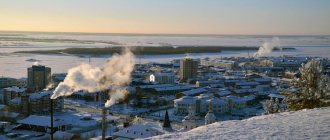Where is it located?
The city of Sovetsky, Khanty-Mansi Autonomous Okrug, is located in the center of the West Siberian Plain. Its entire territory is located in the taiga forest zone, where pine, fir, cedar, spruce and larch trees predominate. There are areas where the taiga is very swampy. Pine forests alternate with dark coniferous forests growing in wetlands. The forests are rich in taiga vegetation and berries: cloudberries, raspberries, cranberries, currants, blueberries, blueberries.
The closest city of Sovetsky in the Khanty-Mansiysk Autonomous Okrug is located to the city of Yugorsk - only 15 km; the distance to Khanty-Mansiysk is 367 kilometers. Other nearby cities are located at a considerable distance: Nizhny Tagil - 583 km, Ekaterinburg - 725 km, Tyumen - 1039 km.
Geography
The Sovetsky district is equated to the regions of the Far North.
Located on the North Sosvinskaya Upland. The southern part of the district extends beyond the Kondinskaya Lowland. The territory of the district is 30.1 thousand km².
In terms of area, the Sovetsky district exceeds such Russian republics as: Chuvashia (18.3 thousand sq. km), Mordovia (26.2 thousand sq. km), Mari El (23.2 thousand sq. km) and others; regions of Russia: Vladimir (29.0 thousand sq. km), Kursk (29.8 thousand sq. km), Tula (25.7 thousand sq. km), Belgorod (27.1 thousand sq. km) and others. The area is comparable in area to the following states: Moldova (33 thousand sq. km), Belgium (30.5 thousand sq. km), Armenia (29.8 thousand sq. km). Located in the V time zone.
The hydrographic network of the region belongs to the basins of the Northern Sosva and Konda rivers.
The distance from Sovetsky to Khanty-Mansiysk is 340 kilometers; the distance to Moscow is 1752 kilometers.
The district borders: in the north - with the Berezovsky district; in the east - with the Oktyabrsky district; in the southeast - with the Kondinsky district; in the west - with the Sverdlovsk region.
History of education
The post-war years of the Soviet Union were a time of intensive construction, restoration of cities, industrial enterprises and further development of the country, which needed forests. The main focus was on the endless taiga expanses of the Tyumen region and specifically on the Khanty-Mansiysk Okrug. In 1957, construction began on a railway connecting the Urals with the Ob basin.
It was this factor that predetermined the construction of the timber industry enterprise, and with it the village where the workers lived. The railway solved the main problem - transportation of timber. The foundation of the village took place in 1962, when a detachment of 50 construction workers landed on the undeveloped territory of the future settlement. Initially, nine houses were built; a year later the number of residents of the village of Sovetsky, Khanty-Mansiysk Autonomous Okrug, numbered 1.5 thousand.
At the end of the summer of 1963, the Ob–Ivdel railway passed near the village. This accelerated the development of the Sovetsky village. Already in January of that year, it was officially declared a workers’ settlement, and its executive body, the Council of Deputies, was created.
Thanks to the leading enterprise - the timber industry enterprise - the village developed rapidly. After a year of its existence, three streets were built. In 1965, schools were opened: an eight-year school and a school for working youth. Two years later, a kindergarten and a public library were built.
Development of the village
The logging village of Sovetsky in the Khanty-Mansi Autonomous Okrug grew quickly. Much attention was paid to the development of its infrastructure. The construction of a clinic, a school, a kindergarten and a club attracted young people here who not only wanted to experience the romance of the taiga, but also dreamed of starting their own families. The population growth, although it increased mostly due to the arrival of new workers, was also home to indigenous people who were born here.
In 1968 the population was just under 6 thousand people. The Presidium of the Supreme Soviet of the RSFSR adopted a decree approving the Sovetsky District of the Khanty-Mansiysk Autonomous Okrug. It included the working villages of Sovetsky, Pionersky and Komsomolsky. The significance of the area for the country can be explained by the fact that in the same year the Sovetsky airport was put into operation as the base unit of the Tyumen air squad. Helicopters were mainly based here, with the help of which communication was carried out with remote settlements.
Notes
- ↑ 12
www.gks.ru/free_doc/doc_2016/bul_dr/mun_obr2016.rar Population of the Russian Federation by municipalities as of January 1, 2016 - [www.perepis2002.ru/ct/doc/1_TOM_01_04.xls All-Russian Population Census 2002. Volume. 1, table 4. Population of Russia, federal districts, constituent entities of the Russian Federation, districts, urban settlements, rural settlements - regional centers and rural settlements with a population of 3 thousand or more]. [www.webcitation.org/65AdCU0q3 Archived from the original on February 3, 2012].
- [www.gks.ru/bgd/regl/B09_109/IssWWW.exe/Stg/d01/tabl-21-09.xls Number of permanent population of the Russian Federation by cities, urban-type settlements and districts as of January 1, 2009]. Retrieved January 2, 2014. [www.webcitation.org/6MJmu0z1u Archived from the original on January 2, 2014].
- [tumstat.gks.ru/wps/wcm/connect/rosstat_ts/tumstat/resources/22904e804154168ab3dff7367ccd0f13/part+1.rar All-Russian population census 2010. Population size and its distribution in the Tyumen region]. Retrieved May 10, 2014. [www.webcitation.org/6PTJWMhJj Archived from the original on May 10, 2014].
- www.gks.ru/dbscripts/munst/munst71/DBInet.cgi?pl=8112027 Tyumen region. Estimated resident population as of January 1, 2009-2016
- [www.gks.ru/free_doc/doc_2012/bul_dr/mun_obr2012.rar Population of the Russian Federation by municipalities. Table 35. Estimated resident population as of January 1, 2012]. Retrieved May 31, 2014. [www.webcitation.org/6PyOWbdMc Archived from the original on May 31, 2014].
- [www.gks.ru/free_doc/doc_2013/bul_dr/mun_obr2013.rar Population of the Russian Federation by municipalities as of January 1, 2013. - M.: Federal State Statistics Service Rosstat, 2013. - 528 p. (Table 33. Population of urban districts, municipal districts, urban and rural settlements, urban settlements, rural settlements)]. Retrieved November 16, 2013. [www.webcitation.org/6LAdCWSxH Archived from the original on November 16, 2013].
- [www.gks.ru/free_doc/doc_2014/bul_dr/mun_obr2014.rar Table 33. Population of the Russian Federation by municipalities as of January 1, 2014]. Retrieved August 2, 2014. [www.webcitation.org/6RWqP50QK Archived from the original on August 2, 2014].
- [www.gks.ru/free_doc/doc_2015/bul_dr/mun_obr2015.rar Population of the Russian Federation by municipalities as of January 1, 2015]. Retrieved August 6, 2015. [www.webcitation.org/6aaNzOlFO Archived from the original on August 6, 2015].
Post-Soviet period
Surprising as it may seem, the post-Soviet period, which hit the industrial regions of the Russian North hard, where many villages and cities turned into “ghosts”, having lost a significant part of the population who left for the mainland, practically did not affect the population of the Soviet Khanty-Mansiysk Autonomous Okrug (you see a photo of this region in the article). The number of residents continued to grow, and in 1996 it amounted to 20,000 people.
In the same year, a decision was made to classify the village of Sovetskoye as a city of regional significance. The city of Yugorsk is removed from the Sovetsky district and classified as a city of district significance.
An excerpt characterizing the Sovetsky region (Khanty-Mansiysk Autonomous Okrug)
When Pierre left and all the family members came together, they began to judge him, as always happens after the departure of a new person, and, as rarely happens, everyone said one good thing about him. Returning this time from vacation, Rostov felt and learned for the first time how strong his connection was with Denisov and with the entire regiment. When Rostov drove up to the regiment, he experienced a feeling similar to the one he experienced when approaching the Cook's House. When he saw the first hussar in the unbuttoned uniform of his regiment, when he recognized the red-haired Dementyev, he saw the hitching posts of red horses, when Lavrushka joyfully shouted to his master: “The Count has arrived!” and shaggy Denisov, who was sleeping on the bed, ran out of the dugout, hugged him, and the officers came to the newcomer - Rostov experienced the same feeling as when his mother, father and sisters hugged him, and the tears of joy that came to his throat prevented him from speaking . The regiment was also a home, and the home was invariably sweet and dear, just like the parental home. Having appeared before the regimental commander, having been assigned to the previous squadron, having gone on duty and foraging, having entered into all the small interests of the regiment and feeling himself deprived of freedom and shackled into one narrow, unchanging frame, Rostov experienced the same calm, the same support and the same consciousness the fact that he was at home here, in his place, which he felt under his parents’ roof. There was not all this chaos of the free world, in which he did not find a place for himself and made mistakes in the elections; there was no Sonya with whom it was or was not necessary to explain things. There was no option to go there or not to go there; there were no 24 hours of the day that could be used in so many different ways; there was not this countless multitude of people, of whom no one was closer, no one was further; there were no these unclear and uncertain financial relations with his father, there was no reminder of the terrible loss to Dolokhov! Here in the regiment everything was clear and simple. The whole world was divided into two uneven sections. One is our Pavlograd regiment, and the other is everything else. And there was nothing else to worry about. Everything was known in the regiment: who was the lieutenant, who was the captain, who was a good person, who was a bad person, and most importantly, a comrade. The shopkeeper believes in debt, the salary is a third; there is nothing to invent or choose, just don’t do anything that is considered bad in the Pavlograd regiment; but if they send you, do what is clear and distinct, defined and ordered: and everything will be fine. Having entered again into these certain conditions of regimental life, Rostov experienced joy and tranquility, similar to those that a tired person feels when he lies down to rest. This regimental life was all the more gratifying for Rostov during this campaign because, after losing to Dolokhov (an act for which he, despite all the consolations of his family, could not forgive himself), he decided to serve not as before, but in order to make amends, to serve well and to be a completely excellent comrade and officer, that is, a wonderful person, which seemed so difficult in the world, but so possible in the regiment. Rostov, from the time of his loss, decided that he would pay this debt to his parents in five years. He was sent 10 thousand a year, but now he decided to take only two, and give the rest to his parents to pay off the debt. Our army, after repeated retreats, offensives and battles at Pultusk, at Preussisch Eylau, concentrated near Bartenstein. They were awaiting the arrival of the sovereign to the army and the start of a new campaign. The Pavlograd regiment, which was in that part of the army that was on the campaign in 1805, was recruited in Russia, and was late for the first actions of the campaign. He was neither near Pultusk nor near Preussisch Eylau, and in the second half of the campaign, having joined the active army, he was assigned to Platov’s detachment. Platov's detachment acted independently of the army. Several times the Pavlograd residents were in units in skirmishes with the enemy, captured prisoners and once even recaptured the crews of Marshal Oudinot. In April, Pavlograd residents stood for several weeks near an empty German village that had been destroyed to the ground, without moving. There was frost, mud, cold, the rivers were broken, the roads became impassable; For several days neither the horses nor the people were given provisions. Since delivery became impossible, people scattered across abandoned desert villages to look for potatoes, but they found little of that. Everything was eaten, and all the inhabitants fled; those who remained were worse than beggars, and there was nothing to take from them, and even little - compassionate soldiers often, instead of taking advantage of them, gave them their last. The Pavlograd regiment lost only two wounded in action; but lost almost half of the people from hunger and disease. They died so surely in hospitals that soldiers, sick with fever and swelling resulting from bad food, preferred to serve, dragging their feet to the front rather than go to hospitals. With the opening of spring, the soldiers began to find a plant emerging from the ground, similar to asparagus, which they called for some reason Mashkin’s sweet root, and they scattered across the meadows and fields, looking for this Mashkin’s sweet root (which was very bitter), dug it up with sabers and ate it, despite to orders not to eat this harmful plant. In the spring, a new disease appeared among the soldiers, swelling of the arms, legs and face, the cause of which doctors believed was the use of this root. But despite the ban, the Pavlograd soldiers of Denisov’s squadron ate mainly Mashka’s sweet root, because for the second week they were stretching out the last crackers, they were only given half a pound per person, and the potatoes in the last parcel were delivered frozen and sprouted. The horses had also been eating thatched roofs from houses for the second week; they were hideously thin and covered with tufts of matted winter hair.
Sovetsky city
The modern city of Sovetsky in the Khanty-Mansi Autonomous Okrug - Ugra - continues to grow and develop. Dozens of kindergartens and schools have been built. SC "Olympus" is the pride of Soviet, which became famous throughout the world for its students, Olympic and world champions in skiing and biathlon. These are E. Dementyev, O. Melnik, D. Ustyuzhanin, S. Vatinov and A. Dotov, swimmers A. Spiridonov and T. Andreikina.
The city has its own heroes - this is A. Buzin, who was posthumously awarded the honorary title of Hero of Russia for completing a responsible task, courage and heroism.
The city is still growing. As of 2016, its population was 29 thousand people. By national composition, the majority of the city’s residents are Russians (86%), Ukrainians make up 5%, Tatars - 1.6%, Bashkirs - more than 1.5%, Belarusians - about 1.5%.
Many social enterprises have been built: shops, cafes, consumer services. Particular attention is paid to the construction of apartment buildings, which are built exclusively from stone. Dozens of well-equipped playgrounds delight little townspeople.
Industry and transport
All large enterprises of Sovetsky are, in one way or another, connected with wood and woodworking. They produce furniture, wooden panels (glued), furniture veneer, and sets of prefabricated wooden houses, which are manufactured at the factory. There are food enterprises and construction organizations.
There is an airport in Sovetsky, whose planes fly to Moscow, Yekaterinburg, Tyumen, Beloyarsk, and St. Petersburg. Not far from the city is the Verkhnekondinskaya station, which lies on the line connecting the Ural region and the Ob region. Two concrete roads Sovetsk–Taiozhny were built through Yugorsk and Sovetsk–Uray.
